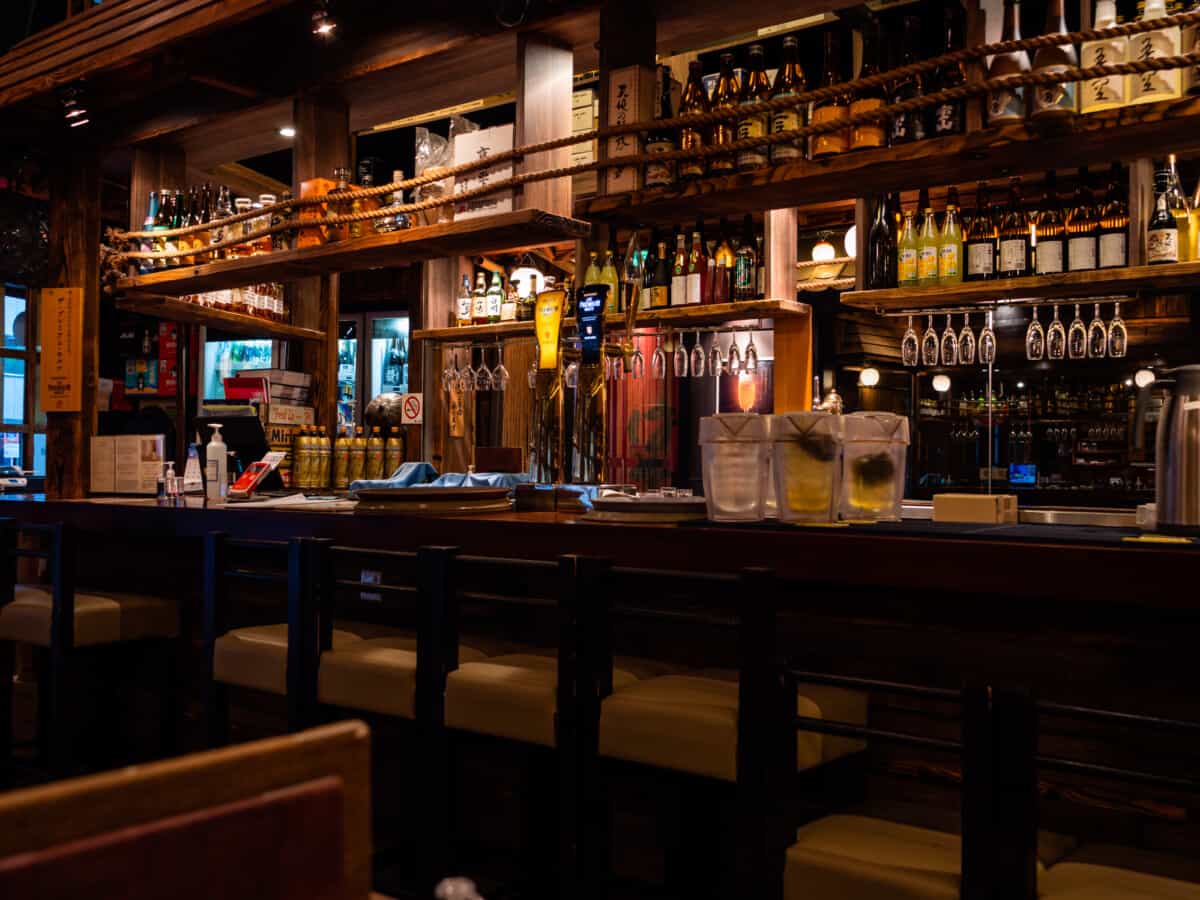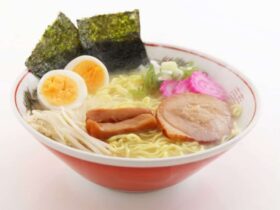Japans take on the local neighborhood pub, bar, small restaurant, or after-work stop for a quick meal and friendly family-owned friendly atmosphere.
Izakaya (居酒屋) is a small Japanese localized bar serving small meals and a variety of alcoholic drinks. For decades, Japanese people have used these establishments to stop in and where they can enjoy a cold drink and a great meal. Generally, family-owned and operated.
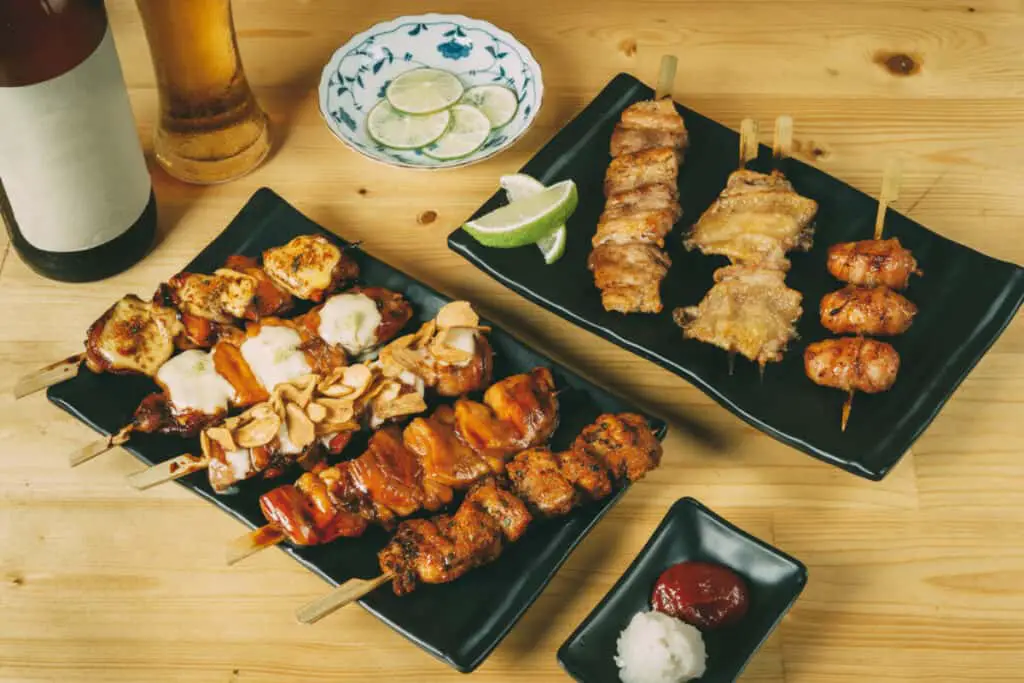
That’s where the word comes from (’to stay’ and ’sake shop’). Nowadays, it’s popular among salarymen to mingle, but also perfect for letting off some steam, socializing, making new connections, or heading home after a long day at the office.
Reasons For Choosing an Izakaya
You can easily find a vast variety of Izakayas everywhere in major cities and small towns with outstanding hospitality and authentic, delicious Japanese dishes and drinks, not to mention the chatty, friendly atmosphere.
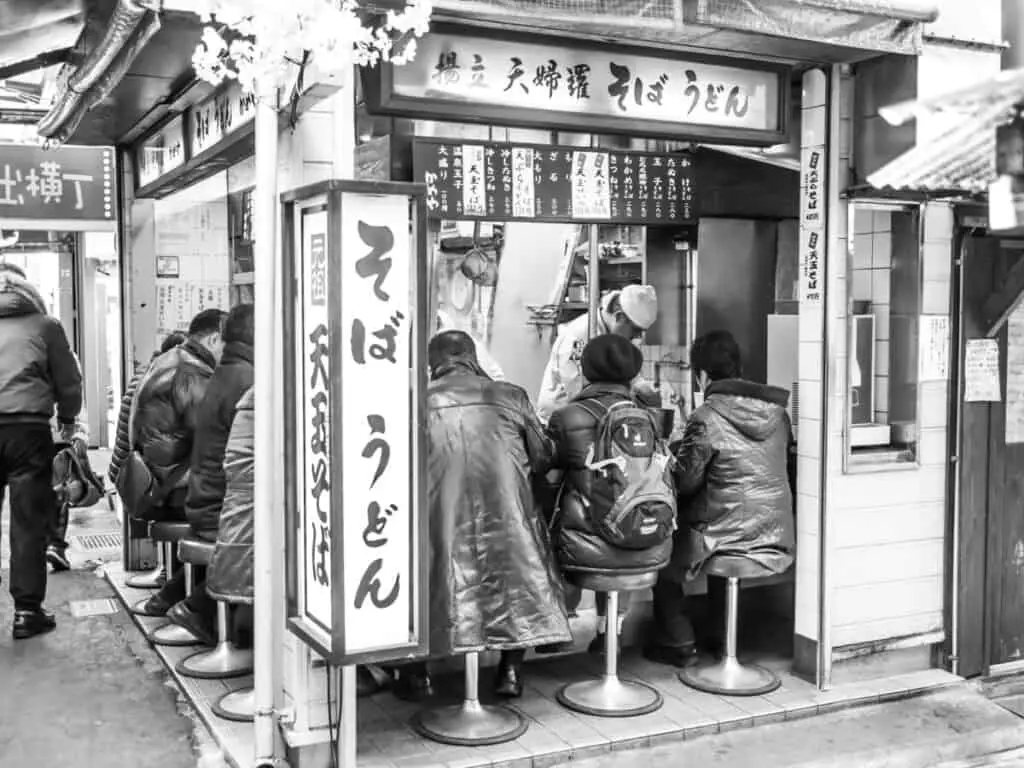
These bars provide you with uniqueness in terms of atmosphere, quality, and experience but also very affordable prices. A visit to an Izakaya enhances your experience in Japan without a doubt.
How does it work?
In a relaxed, home-style setup, you can place your order on a touch panel or just call for a waiter. If you go with a big group of people, you should make a reservation.
Without reservation, a staff member is going to help out walk-ins by providing information about the menus and possible waiting times. Some places offer tatami seating or smoking seating options depending on city ordinances.
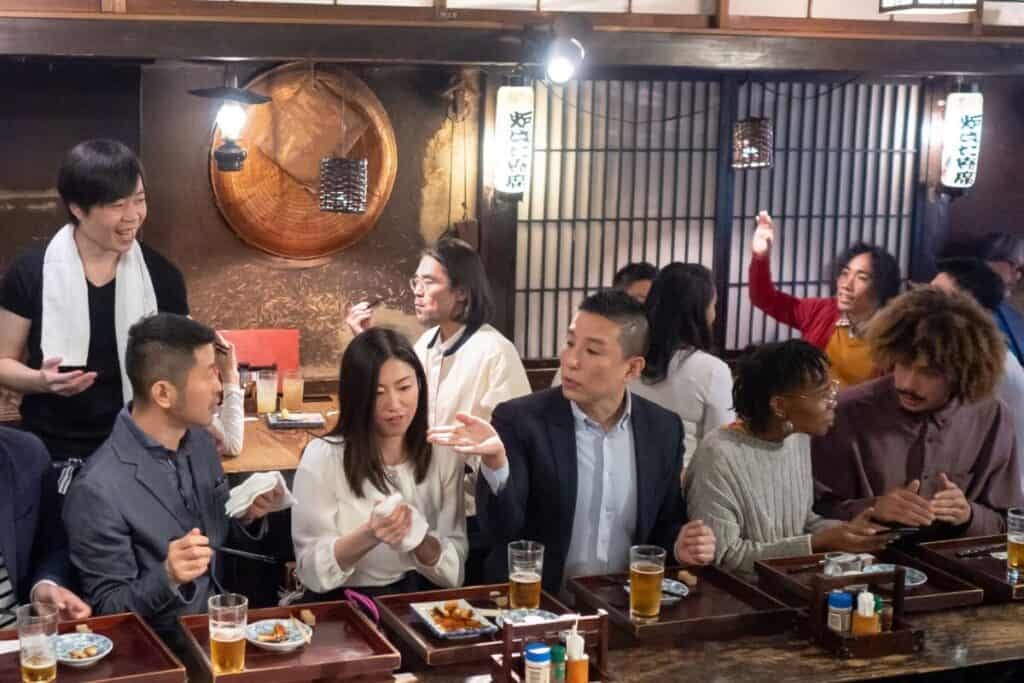
Some izakaya are so small that seating may be limited to five or six persons. Your cook, bartender, and host might also be the owner and only staff member at some of the izakaya found in Tokyo’s narrow alleyways.
Take note that some izakaya may have no one there that speaks any English at all. Outside of using a translation app on your phone it could be a point and choose situation if your Japanese language skills are limited.
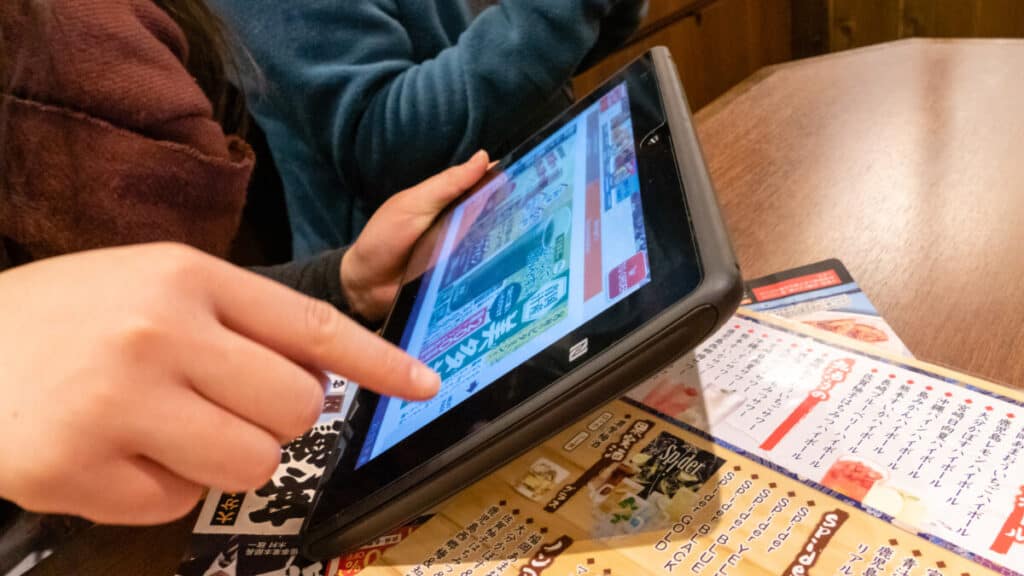
Larger establishments can be the size of a standard-sized American restaurant and can have a dozen or more staff members with menus in English.
After seated, you will get an ’oshibori’ (hot towel) to clean your hands and an ’otoshii’ (snack of the day) with your first drink. You can choose single items from the menu or enjoy the combination meal of a nicely organized and well-balanced set course menu. Some Izakaya offer (for max 2 hours), you can go for all-you-can-drink service called ’nomihoudai’. The bill is usually left on the table or tracked by the staff members and run a tab.
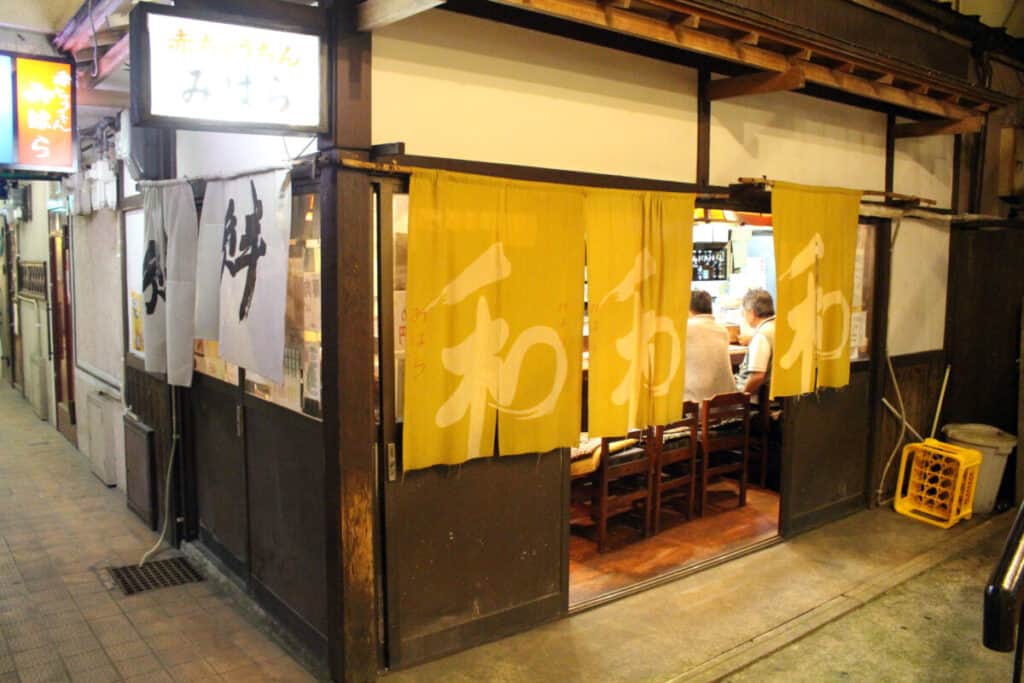
What is on the menu?
Izakayas provide their guests a wide range of bite-sized small meals such as:
- Karaage (deep-fried chicken)
- Sashimi (sliced raw fish)
- Yakitori (grilled chicken)
- Agedashi tofu (deep-fried tofu)
- Salty cabbage
- Yakisoba (fried noodles with vegetables)
- Tako-wasabi (raw octopus bites with wasabi sauce)
- Edamame beans
- Dashimaki-Tamago (Japanese rolled omlette)
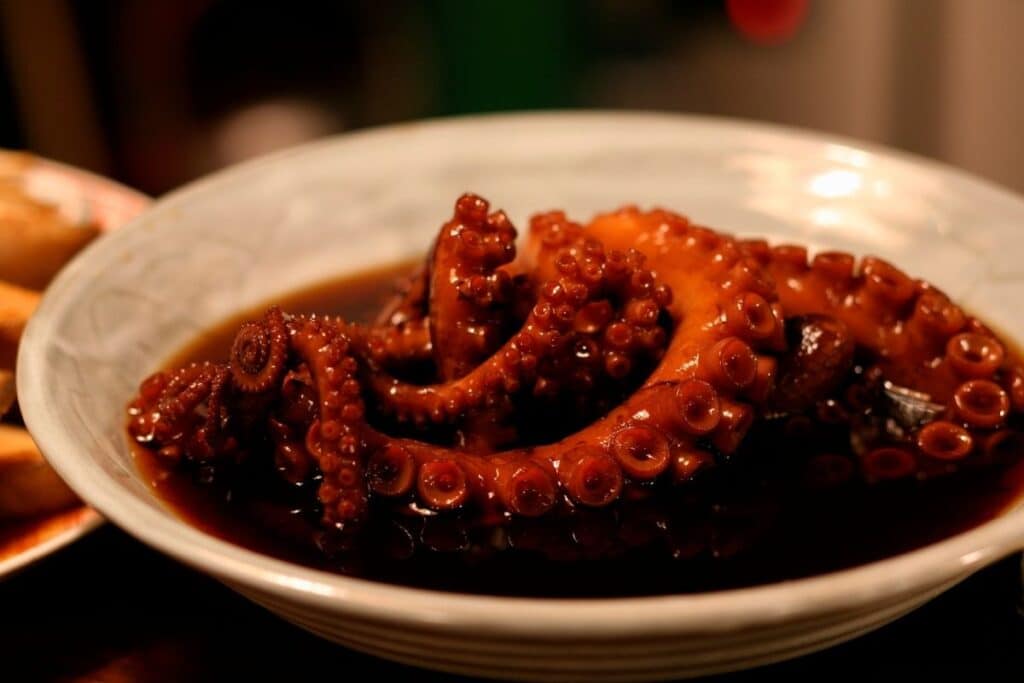
Besides the choose-and-eat dishes, you can find some options which are more filling, such as noodles, soups, curry with rice, and the list can be endless depending on the local flavors.
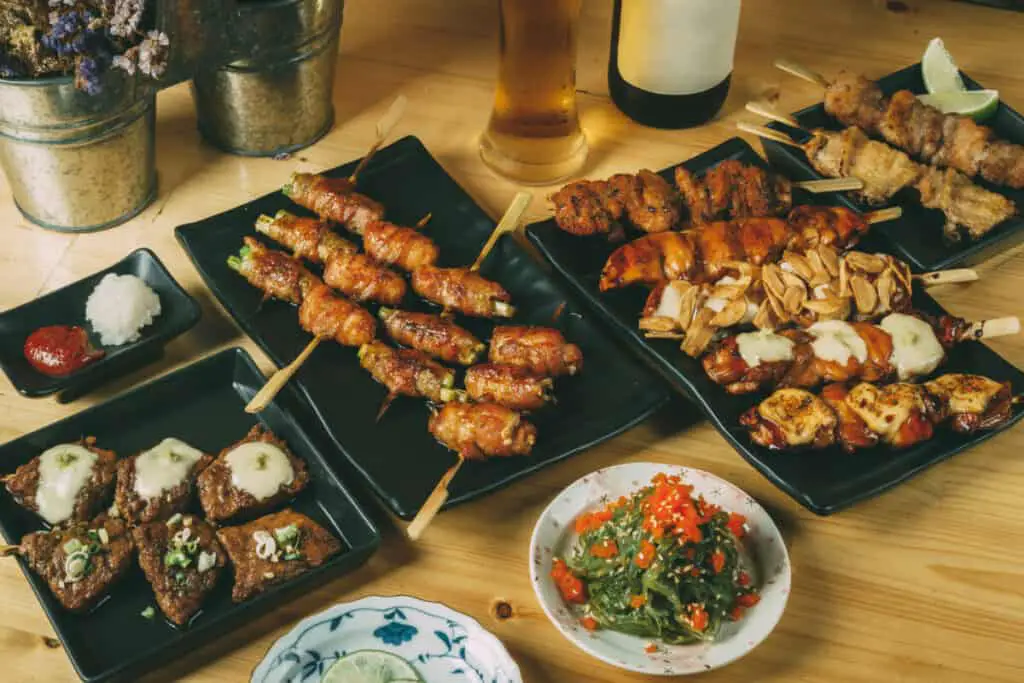
As a general rule Izakayas offer meat skewered on small sticks (chicken, beef, tofu with cheese, shrimp, green pepper, etc.) are also very popular. Drinks vary from traditional Japanese alcoholic beverages (sake selections, Japanese whiskeys) to Western liquors, cocktails, and soft drinks.
But, how much does it cost?
How much an evening in an izakaya would cost? It mainly depends on the system used in that izakaya, the type of izakaya, and the menu of your choice. A dish in a corporate chain Izakaya would cost approximately 200 to 600 yen (2-5 $), and drinks would be 250-500 yen (2-4,5$).
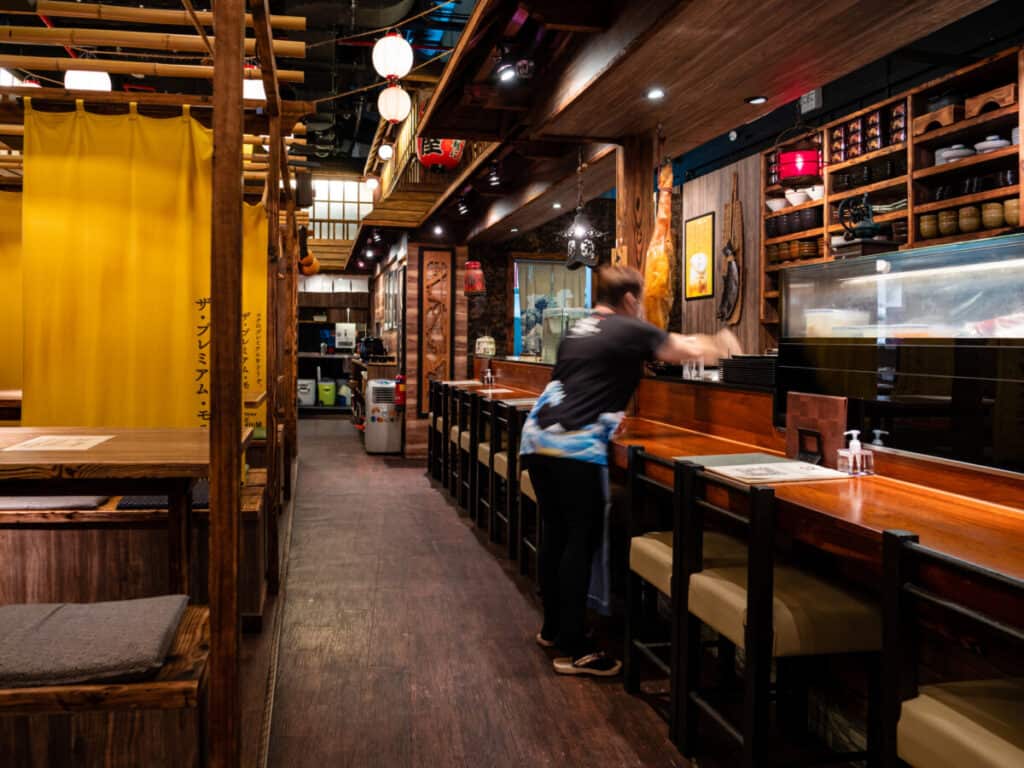
Set menus containing several dishes (approx. 5-8) cost between 2500 and 4000 yen (22-36$) per person.
In privately-owned Izakayas, the price can go up because of the freshly prepared and locally sourced ingredients. The food would go from 4-500 yen (3-5$) to 1500 yen (13,5$), while the drinks would cost 500 yen, alcoholic beverages would be priced at a maximum of 1000 yen (9$).
The ’Nomihoudai’ (all you can drink) option adds an extra 1200-2000 yen (10-18$) to the bill.
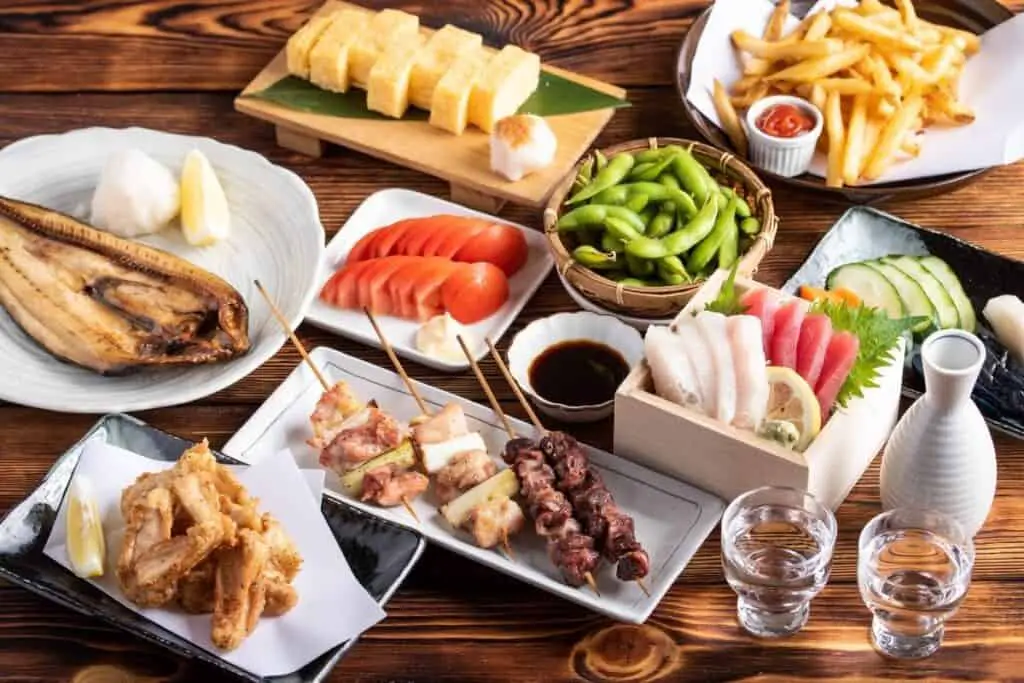
Etiquette and customs
It is necessary to learn and accommodate cultural differences when visiting izakaya in Japan. Nobody wants to be rude, not to mention how much the locals will appreciate the mindfulness and consideration you show during your meal. Here are a few customs you need to be careful of when it comes to dining:
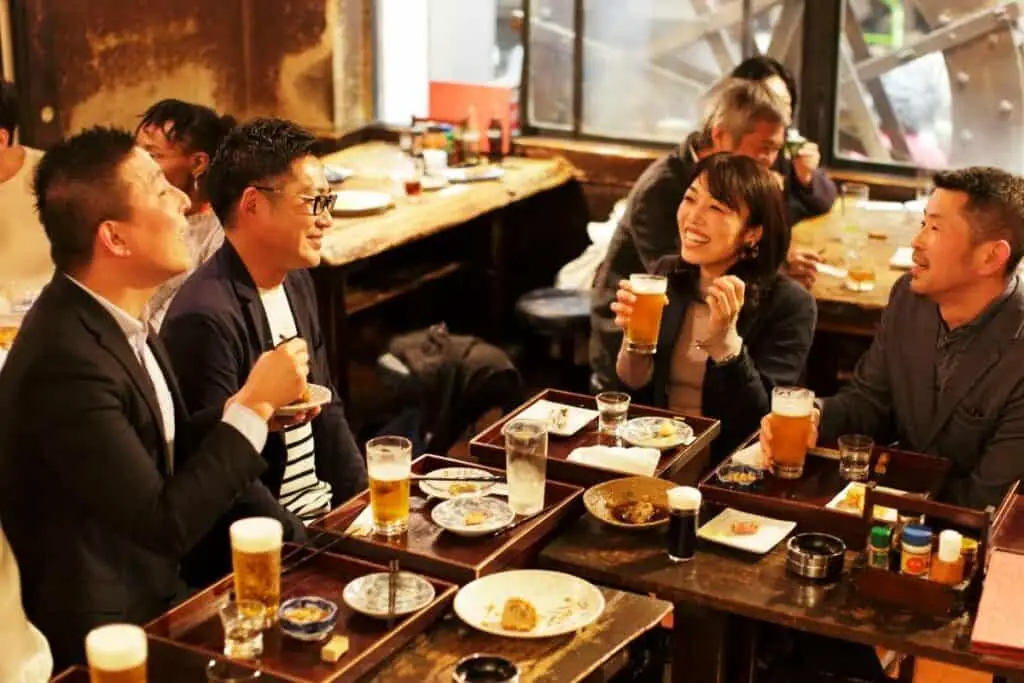
- Order a drink first. Usually, Japanese people start meals with a glass of beer, although you can choose other drinks as well. Ordering a drink first sets up the mood. It is also a part of Japanese drinking culture to say a toast and clink your glasses and say Kanpai (cheers).
- When out with Japanese friends or co-workers be careful of empty glasses. When you see someone’s glass is almost empty either you refill or confirm their next order. When you fill up the glass, you should show the label on the bottle, so they know what type of alcohol your pouring for them. It is a sign of politeness and attentiveness. A large part of Japanese culture is showing concern for others before ones self.
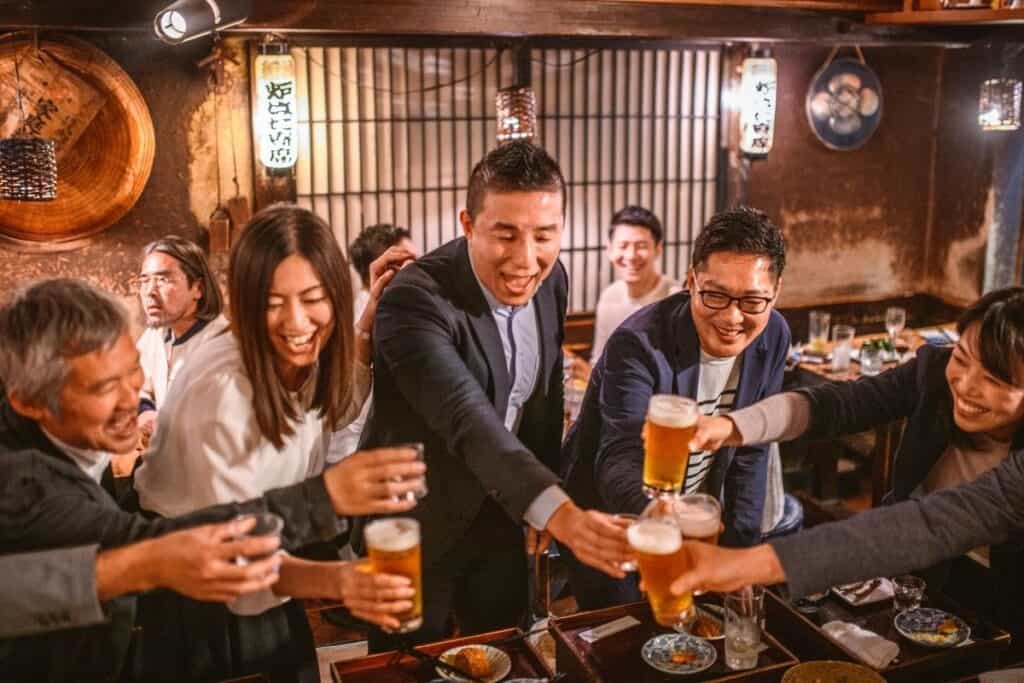
- Use the chopsticks in the right way. Never poke your food or stick them vertically in your food, especially rice, since it has a different meaning (burial customs). Never play with your chopsticks either! At Izakayas, people often share their food. Use a clean chopstick to take your portion to the small bowl in front of you if food is served platter style.
- Be mindful about the last order! In Izakayas, the staff member will tell you the time of your last order, which is usually 30 minutes before closing or if your ordering from an all you can eat or dink time window. Be careful because the time for drinks and food can be different, (1 hour or 2) so do not forget to ask the staff beforehand.
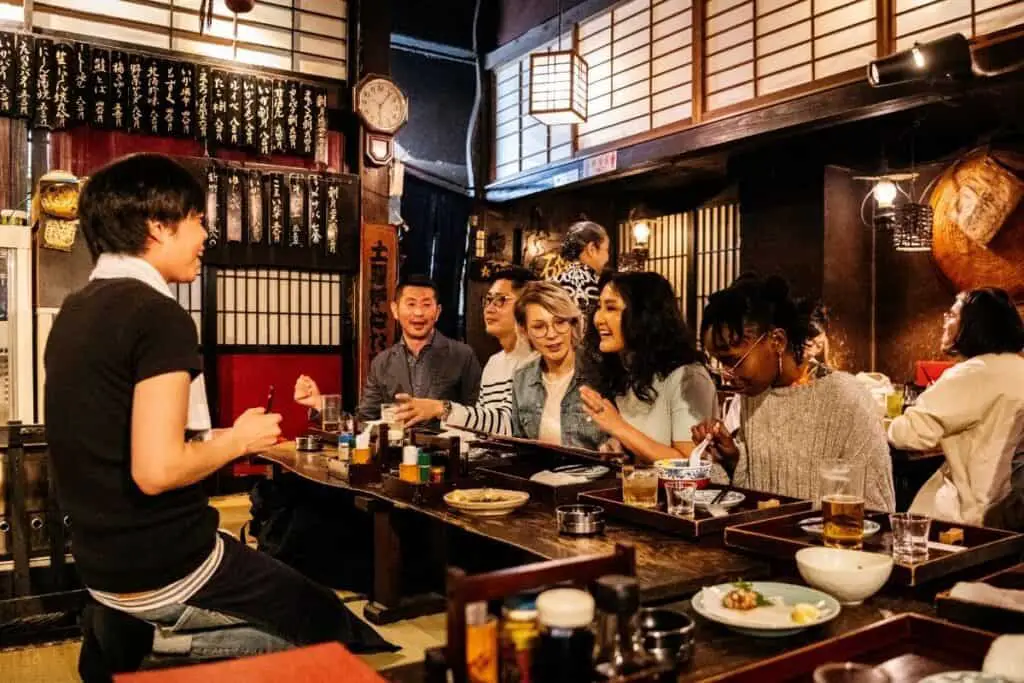
- When you call the waiter with a nice and polite ‘Sumimasen’, (excuse me) raise your hand to let them know, you are about to place an order. Never whistle or shout to call the staff members it is considered quite rude by Japanese.
- In numerous countries people tip to express their satisfaction about the service they received. In Japan, the price of a service is calculated with great detail, therefore it’s considered rude to tip, so let’s avoid it. Tipping is almost unheard of in Japan. If you want to express your appreciation, just visit the establishment frequently. Especially if its a small mom and pop place.
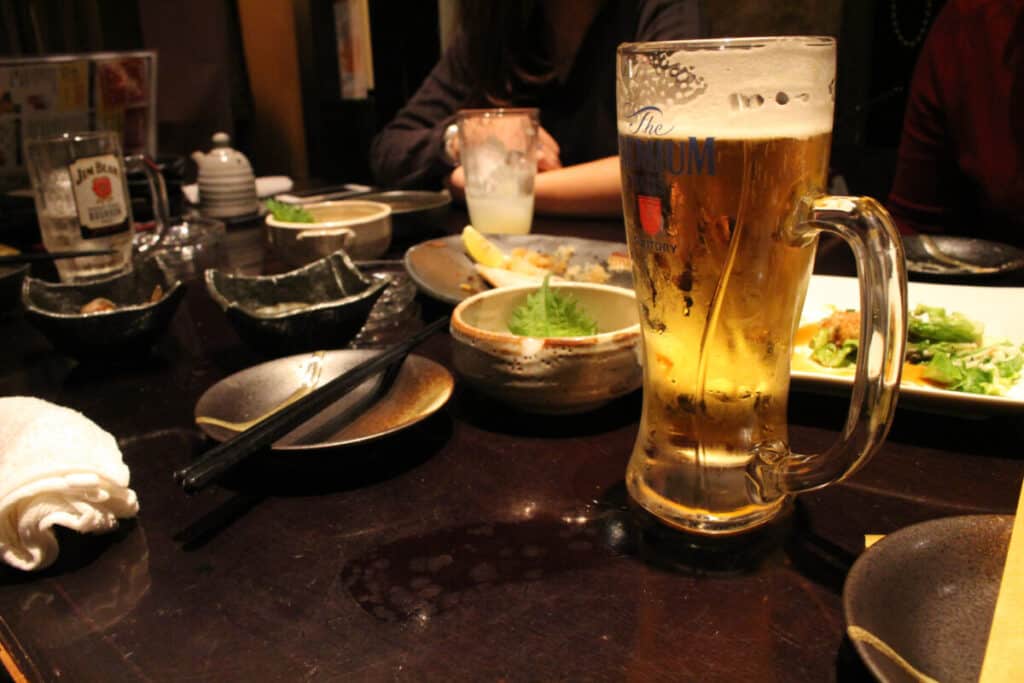
Say It In Japanese
If you feel brave enough, you can also try to memorize the following Japanese phrases. Some of these phrases used at the restaurants are:
’Sumimasen’ – Excuse me.
’Kore wa nan desu ka’ – What is this?
’Arigatou gozaimasu’ – Thank you very much.
’Osusume wa nan desuka’ – What do you recommend?
’Kore, onegaishimasu – This one, please.
’Kanpai’ – Cheers
’Kaikei Onegaishimasu’ – The bill, please
Where to find izakayas?
If you are looking for a chain izakaya, there are some well-known establishments: (Torikizoku, Shirokiya, Watami) which can be found in almost every major city in Japan.
It’s recommended to look up which prefecture or region they have locations prior to your visit. Some of these chains also operate in many other Asian countries.
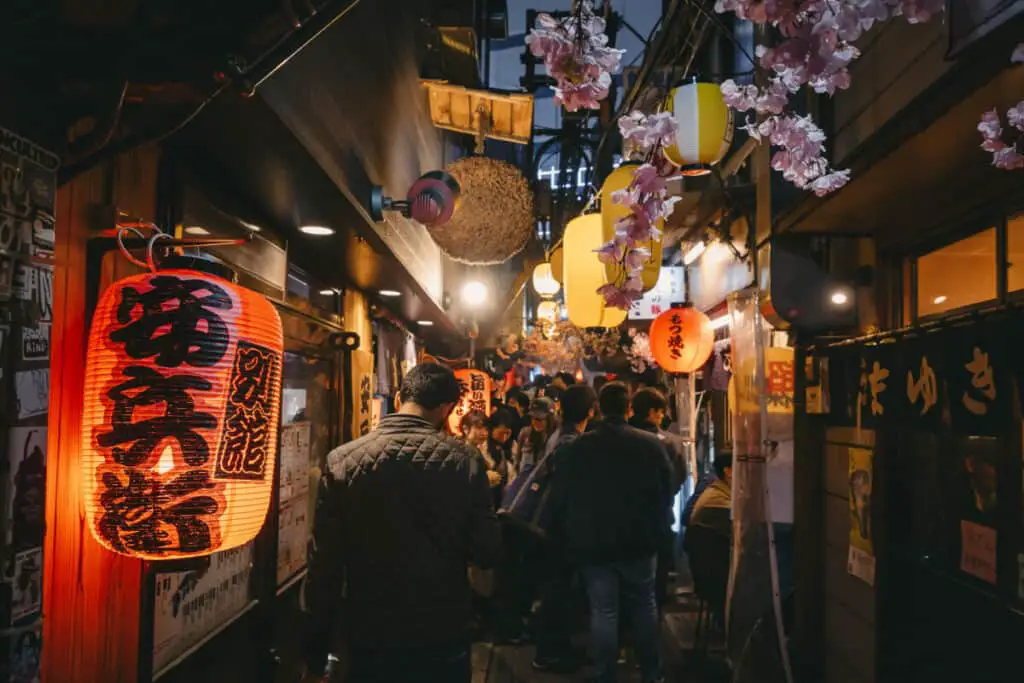
If you have no idea where to start finding a great izakaya, then you can just check online to find a few local Izakaya or you can ask hotel staff (where you’re staying) or most any local persons for a recommendation. Joining a guided izakaya tour by locals can be an interesting and authentic experience.
In case your destination is Toky or Osaka, here is a guide to help you find the popular neighborhood izakayas:
TripAdvisors Top Rated Izakayas In Tokyo

